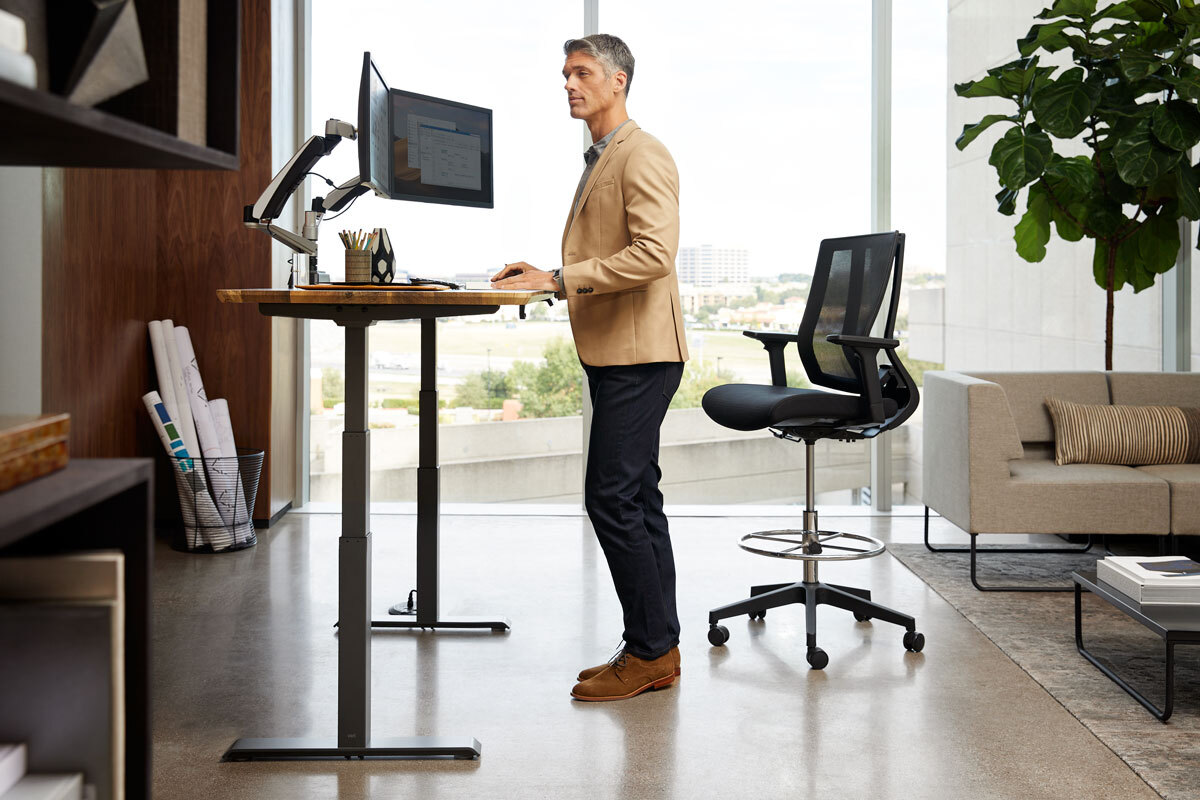Boosting employee productivity is crucial to ensure efficiency in any work environment. Few interruptions can affect business operations when workers remain productive, leading to more outputs and increased performance and profitability. A Gallup survey has also shown that employees who are more engaged and productive in their work can contribute to a 21% increase in profits.
There are many ways to enhance productivity in the workplace, from motivating and rewarding workers and allowing greater flexibility in schedules to investing in good ergonomics equipment. All these contribute to reduced stress and improved performance. Studies have shown that paying attention to ergonomics can increase productivity by making workers feel more physically comfortable, reducing the risks of health issues like body pain that can hamper work. Standing desks are an excellent — and increasingly popular — example of equipment that can help increase job performance. Below, we look at standing desks, their features, and how they can boost employee productivity.
What are standing desks?
Standing or sit-and-stand desks are height-adjustable, which means they can be tailor-fitted for both sitting and standing positions. These desks enable employees to switch between two working positions throughout the day to promote physical movement. There are several standing desk risers from brands like Ergotron and Varidesk that are available in the market, and they are easily adjustable to achieve optimum work posture. Unlike regular sit-only desks, standing desks can help reduce body pains caused by poor posture and long hours of staying in one position.
These standing desks can be used alongside a desk treadmill or a walking pad, especially when working remotely. DeerRun and Maksone are some options available in the market. Research shows that employees who use a desk treadmill while working from home can have increased energy and improved concentration. When used alongside standing desks, these walking pads can help combat the effect of a sedentary lifestyle.
But how exactly do standing desks improve productivity? Here’s what you need to know:
Improved productivity
Research published by the National Institutes of Health shows that a sit-and-stand desk can improve work productivity and health. Since standing desks relieve muscle pains caused by poor posture, any physical discomfort associated with oversitting is reduced, thus leading to improved engagement and focus, helping boost productivity in the workplace. In fact, a scientific study of call center employees who used standing desks mentioned that these workers experienced improved productivity and mental focus. Standing can also improve blood flow, resulting in higher oxygen levels in the bloodstream, which is associated with higher energy levels and can increase work performance.
It’s no secret that prolonged sitting at the workplace can lead to a sedentary lifestyle, potentially causing health concerns ranging from body aches to cardiovascular problems that hamper work productivity and compromise quality of life. Reducing sedentary time while working is, therefore, crucial to avoid these health risks that can get in the way of work. Since standing has a higher energy expenditure than sitting and can help relax muscles, sit-and-stand desks can help promote physical health while working, reduce the problems caused by oversitting, and improve comfort and engagement, leading to enhanced productivity.
Employees are more productive when they experience less muscular pain and reduced health risks associated with a sedentary lifestyle caused by oversitting. Thus, standing desks are a viable option to promote health and boost work performance in the long run.
Written for thehumancapitalhub.com by Jea Mason




